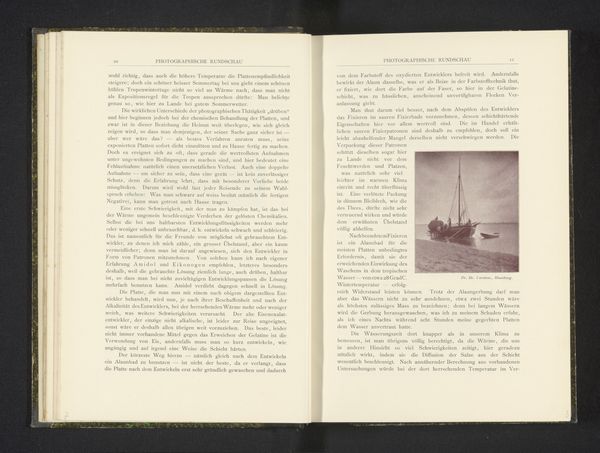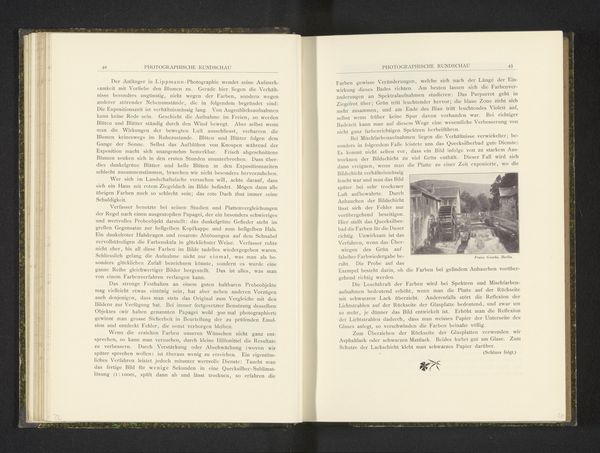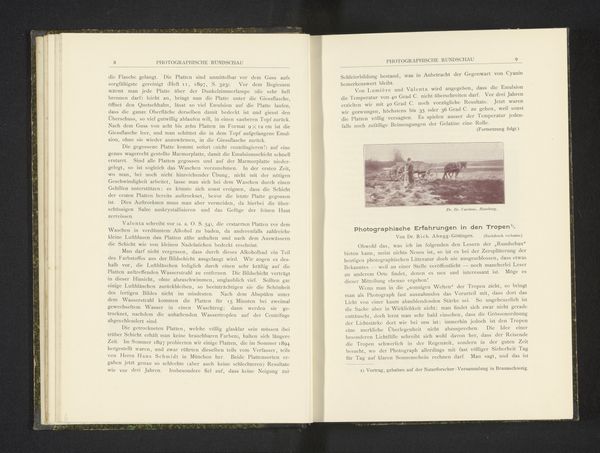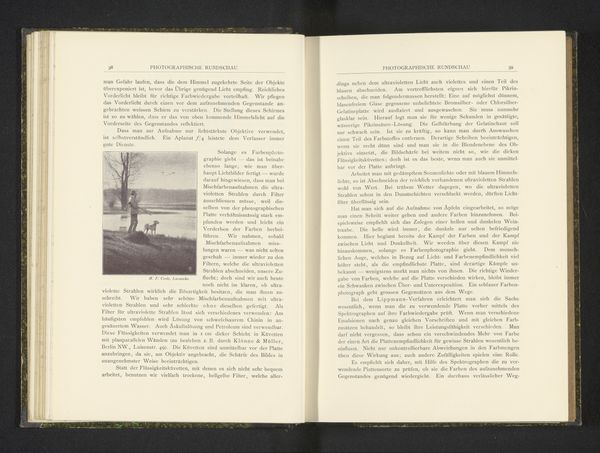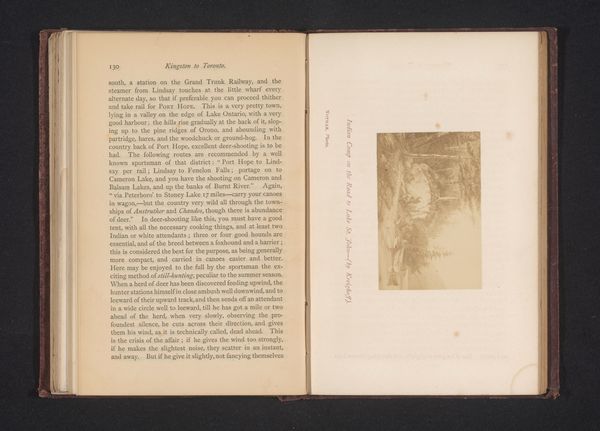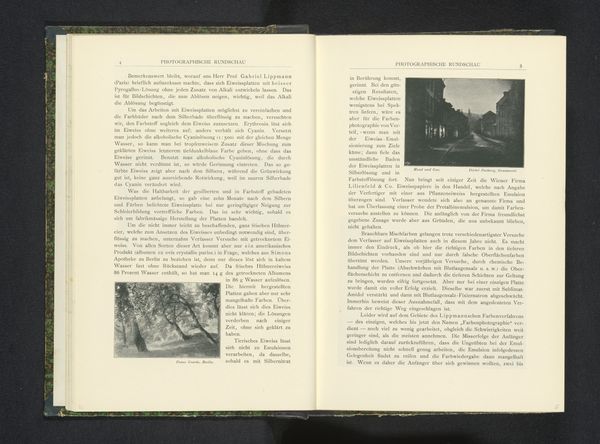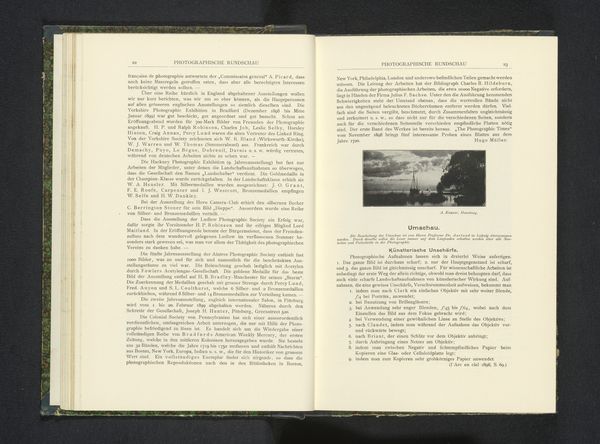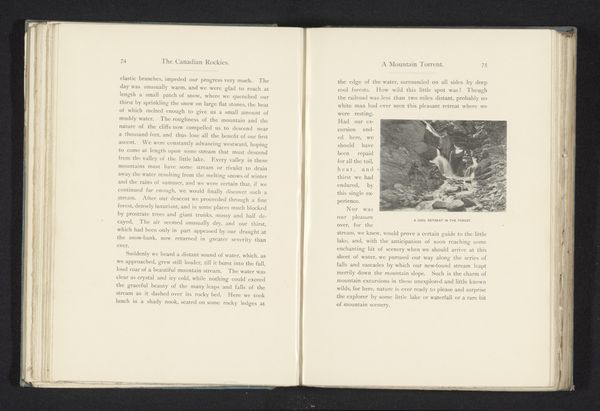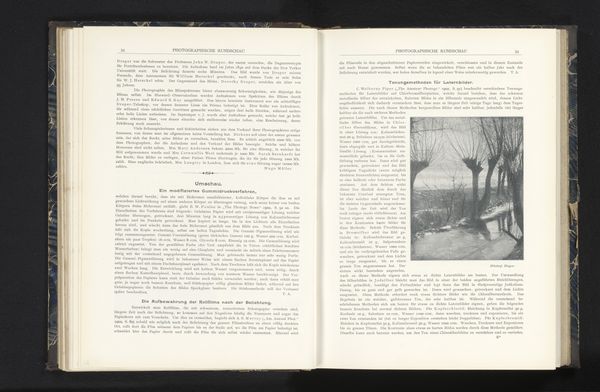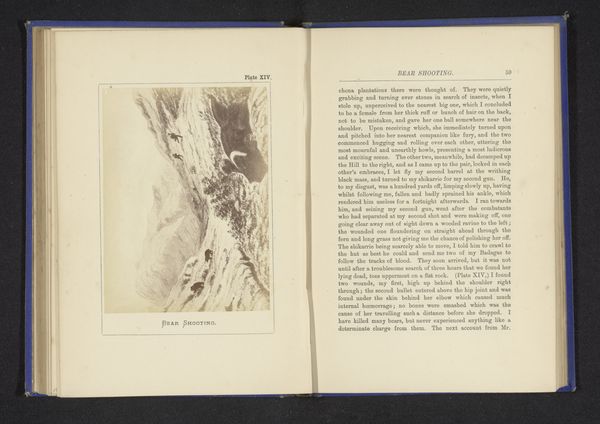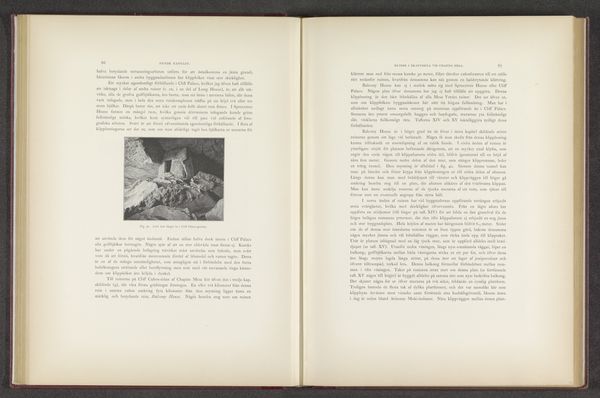
print, photography
#
art-nouveau
# print
#
book
#
german-expressionism
#
photography
Dimensions: height 63 mm, width 77 mm
Copyright: Rijks Museum: Open Domain
This photogravure of Lake Como was made by A. Bucquet and published around the turn of the twentieth century, reproduced in a periodical called "Photographische Rundschau." Photogravure is a printmaking process, involving a photographic image transferred to a metal plate and then etched. It's like a cross between photography and etching. The image is fixed with acid, and the plate is then inked and printed onto paper. This approach allowed for mass production of photographs within the pages of a book. Looking closely, you can see the delicate tonal range achieved through this photomechanical process. The velvety blacks and soft grays capture the serene atmosphere of the Italian lake. The amount of labor and skill involved is considerable, from the photographer capturing the scene, to the technicians making the printing plate. These are the kind of skilled jobs that grew from the late 19th century boom in industrial printing. Photogravure was a way of bringing art and information to a wider audience, but it also relied on a complex system of labor and production. Recognizing this helps us appreciate not only the beauty of the image, but also the social context in which it was created.
Comments
No comments
Be the first to comment and join the conversation on the ultimate creative platform.
